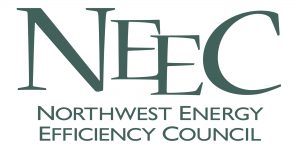The second biennium is approaching under Washington State’s Energy Independence statute (aka I-937). Qualifying electric utilities (largest 17 in the state) must establish a conservation target for the upcoming 2 year period that is a pro-rata share of their 10 year conservation potential that is cost effective and achievable (as determined by a methodology consistent with the Northwest Power and Conservation Council). Investor owned utilities (Puget Sound Energy, Avista Utilities, and PacifiCorp) will file their target intentions with the Utilities and Transportation Commission on November 1st while public utilities establish their targets with the approval of their local governing boards. While the pace of conservation resource acquisition has been at historic highs (see article below), the 937 target process remains controversial. The rules that govern the target setting process (WUTC rules for private utilities and the Washington Administrative Code – WAC – for public utilities) contain key differences. For example, the WUTC allows utilities to establish their targets as a range rather than a point target, while the WAC does not. Biennial targets are pre-approved by the WUTC for ensuing 2 year periods while public utilities have some degree of uncertainty about the appropriateness of their targets until the State Auditor concludes a post-biennium audit. IOU conservation advisory committee meetings (NEEC is a member of both PSE’s and Avista’s) indicate that the likely target filings will see an expansion of PSE’s conservation goals (over those of the 2010-2011 biennium) and a target range from Avista that could be either a decline or an expansion of their current program activity. [Note: NEEC does not support a range for I-937 target setting, believing that the law requires a point target equal to 20% of a utility’s 10 year conservation potential.] NEEC will report on 2012-2013 I-937 conservation targets as that information becomes available.
 The Northwest Energy Efficiency Council transitioned to the name Building Potential in 2024. The organization’s legal name remains the same and the Board of Directors and Staff have not changed. The Northwest Energy Efficiency Council transitioned to the name Building Potential in 2024. The organization’s legal name remains the same and the Board of Directors and Staff have not changed. |